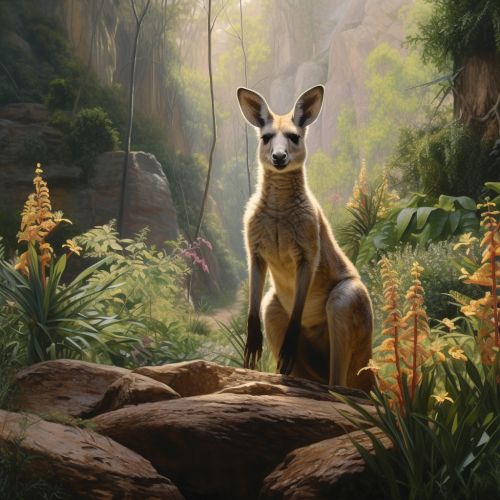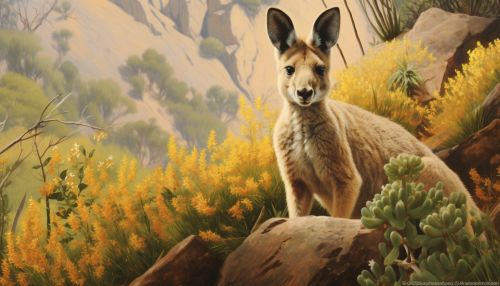Marsupial
Introduction
Marsupials are an infraclass of mammals, known as Marsupialia. They are characterized by giving birth to relatively undeveloped young, which continue to develop outside the womb, typically within a pouch on the mother's body. Marsupials are found primarily in Australia and New Guinea, although there are also species found in the Americas, particularly South America.


Evolution and Classification
The evolution of marsupials is a topic of significant scientific interest. The earliest known marsupial, Sinodelphys szalayi, lived approximately 125 million years ago during the Early Cretaceous period. Marsupials are believed to have diverged from placental mammals (Eutheria) around 160 million years ago. The exact evolutionary pathway of marsupials is still a subject of ongoing research, with theories suggesting a possible South American origin, followed by migration to other parts of the world.
Marsupials are classified into three orders: Diprotodontia, Dasyuromorphia, and Peramelemorphia. The largest order, Diprotodontia, includes well-known species such as kangaroos, wallabies, and koalas. Dasyuromorphia includes carnivorous marsupials like the Tasmanian devil and quokkas, while Peramelemorphia includes the bandicoots and bilbies.
Anatomy and Physiology
Marsupials exhibit a wide range of physical characteristics, reflecting their diverse habitats and lifestyles. However, all marsupials share certain anatomical features that distinguish them from other mammals. These include the presence of a pouch in females for carrying and nourishing their young, and a unique reproductive system in which females typically have two uteri, unlike the single uterus found in placental mammals.
Marsupials also have a distinctive dental formula, with a varying number of incisors, canines, premolars, and molars. The dental formula varies among different marsupial species, reflecting their diverse diets, which range from strictly herbivorous to omnivorous and carnivorous.
Reproduction and Development
The reproductive process in marsupials is unique among mammals. Female marsupials typically give birth to a single offspring at a time, although twins are not uncommon in some species. The gestation period is relatively short, often less than a month. The undeveloped young, known as a joey, then crawls into the mother's pouch, where it attaches to a teat and continues to develop.
The period of pouch life varies among different marsupial species, ranging from about two months in the bandicoot to up to a year in the kangaroo. During this time, the joey is nourished by the mother's milk and protected from predators and environmental conditions.
Ecology and Behavior
Marsupials occupy a wide range of ecological niches, from arboreal species such as the tree kangaroo and possum, to terrestrial species like the wombat and Tasmanian devil. Some marsupials, like the sugar glider, are even capable of gliding flight.
Marsupials exhibit a range of behaviors, from solitary to social. Some species, like the kangaroo, live in large social groups known as mobs, while others, like the Tasmanian devil, are largely solitary. Marsupials also exhibit a range of diurnal and nocturnal activity patterns, with some species being active primarily during the day, others at night, and some at twilight.
Conservation Status
Many marsupial species are threatened or endangered due to habitat loss, predation by introduced species, and other human impacts. Conservation efforts for marsupials include habitat protection and restoration, captive breeding and reintroduction programs, and public education about the importance of marsupials to biodiversity and ecosystem health.
